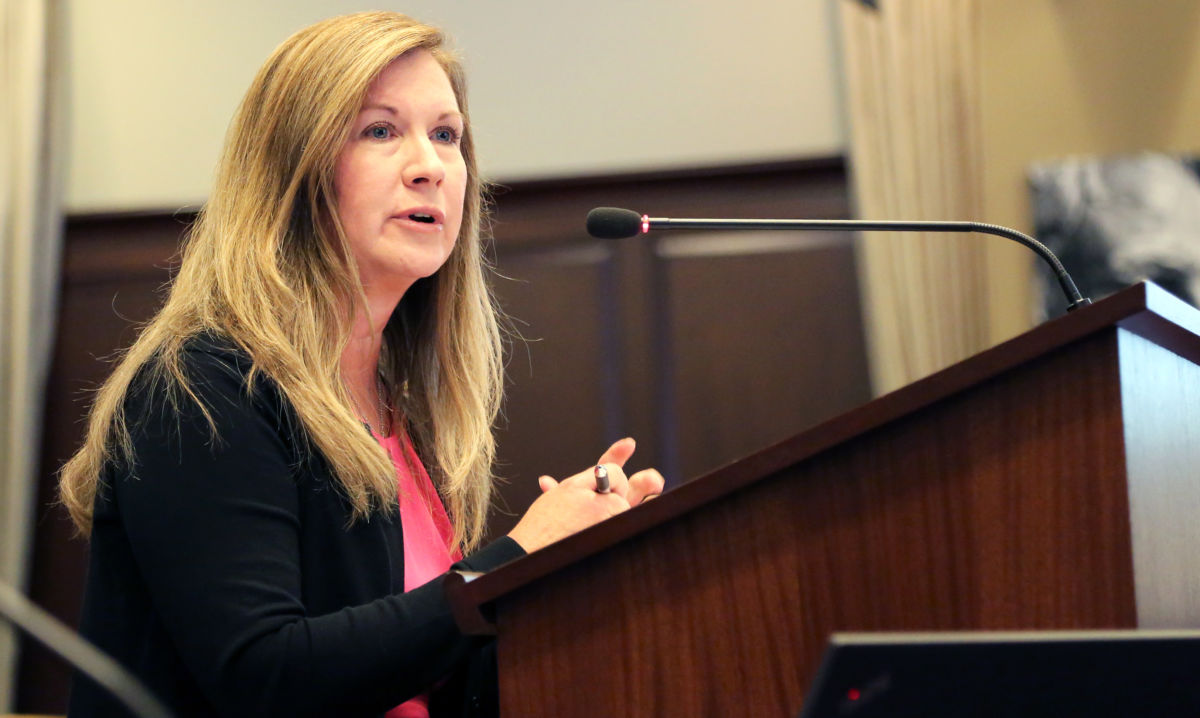It didn’t take long for Scott Bedke to break down the looming battle over school funding.
Staring at pages of charts and tables — a list of the various line items in Idaho’s K-12 budget — the House speaker noted that there’s a history behind every number. Every line item represented a victory for someone, the culmination of a process with “political blood spilled.”
And that’s why it will be difficult — and perhaps very difficult — to rewrite Idaho’s complicated school funding formula.

Idaho’s K-12 budget is carved up by spending line items: some big, some small. Each line item puts money into a specific program with a specific constituency, so none will go away without a fight. Bedke’s remarks, made during last Wednesday’s school funding formula committee meeting, were not as much an observation as they were a warning.
Before those fights begin, let’s review how we got to this point.
Idaho’s funding formula is so confusing and byzantine that some lawmakers and education leaders want to chuck it. They’d prefer putting the same amount of money into a streamlined formula that is tied, simply enough, to student enrollment. Without all the line items, local school superintendents and charter school administrators would have more freedom to spend money as they see fit, and react more quickly to local needs.
Local control.
Sounds great, in theory.
In reality, the Idaho Legislature isn’t that big on local control. Not when it comes to spending $1.8 billion on K-12.
Lawmakers and governors have plenty of ideas about where to spend money on K-12. And the budget has the line items to prove it. Classroom technology? $36.5 million. Training for teachers? $21.6 million. Extra help for struggling readers? $13.2 million. Money for charter school facilities? $7.9 million.
The list goes on. And on.

With every line item, legislators and governors exert their own control over the budget. They pick priorities and they make sure to skim some money into them. Marilyn Whitney, Gov. Butch Otter’s point person on education policy, alluded to that point during last week’s committee meeting. Pointing to the $21.6 million for training, Whitney said this line item is on the books to make sure professional development indeed takes place in the schools.
Many of these line items come straight from Otter’s 2013 K-12 task force — and the five-year plan that came from the group. Topping that list of task force goodies is the biggest line item in the K-12 budget, $761.6 million for the teacher salary career ladder.
If lawmakers decide to get rid of the career ladder line item, the $761.6 million could go back to districts and charters to spend at their discretion. Most of the money probably would stay in teacher salaries, by far the largest expenditure in K-12. But when it comes down to making a tough decision, will lawmakers really cede control over three quarters of a billion dollars — especially when many policymakers are sensitive about the bad press Idaho receives over low teacher pay and teacher shortages?
That’s a political call, and a tough one.
Ultimately, every decision about the line items will come down to political preferences.
Case in point: the committee’s paid consultants with the Education Commission of the States recommend continuing the state’s $15-million-a-year advanced opportunities program, while plowing the $9 million college and career advisers’ line item into the kitty for the new formula. The two programs serve complementary purposes. The advanced opportunities program allows high school students to take college-level courses on the taxpayer’s nickel, while the college and career advisers are supposed to help students chart a path for life after high school. Is one program more valuable than the other? Are both worth keeping — or are neither worth keeping?
That’s a political decision, one of many.
The funding formula committee made no such decisions last week. In the next few weeks, lawmakers will look at computer models to see what a funding formula looks like with (and without) some of the add-ons they have attached to the budget since 1994.
It’s not unlike another big, gnarly battle that really hasn’t gone anywhere around the Statehouse: the debate over sales tax exemptions.
For years, some of the Legislature’s tax wonks have noodled around with the idea of getting rid of some or all of Idaho’s sales tax exemptions. They have argued that the state could simplify the tax code, and perhaps lower the overall 6 percent tax rate, simply by repealing the loopholes.
But every loophole — whether it covers something as broad as prescription drugs or as narrow as caskets — has a built-in base of support. Having shed political blood to get their exemptions on the books, the lawmakers and lobbyists aren’t going to give them up easily. Consequently, and not surprisingly, sales tax simplification has never really gotten past the talking stage around the Statehouse.
Simplifying the K-12 budget could be just as tough to pull off.
